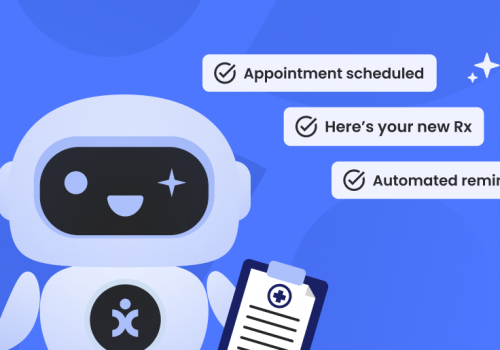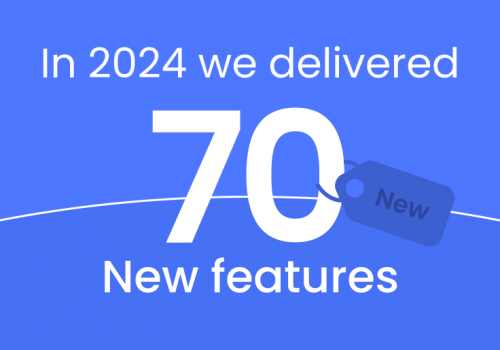Customer Service Practices. The key to providing good customer service is easily and quickly building a good relationship with your customers. Understanding the customer, providing them with a positive experience, and thanking them for their custom. A customer that is happy is far more likely to return and will likely spend more.
Running a customer service department can be tougher than you might think, keeping people happy isn’t always that easy, and keeping staff morale can be tough too. There are inevitably those customers that will not be happy. The trick is trying to keep them as happy as possible – and keep them coming back.
Remember the old adage, it’s easier to keep an existing customer happy, than it is to find a new one. So with that in mind, we’re going to share our top 8 best customer service practices that will help keep your customers happy.
With insight, tips, tricks, some structured approach, and some advice. Then we’re going to provide the easiest way possible to achieve this.
So let’s not keep you any longer and get started with our list.
1. Who is Your Customer?
According to Forbes, “…it’s crucial for everyone involved in your business to understand your ideal audience.”
It’s worth taking a step back to look at who your customer actually is. Creating an effective customer experience is guesswork if you don’t know much about your intended audience.
If you don’t know what kind of customer you’re trying to attract, then it’s going to be harder to provide them with a service that understands their needs and meets them. Make it easy for yourself, and learn about your customers.
Creating a persona of the scope of customers that you want to attract, and that you deal with most is key. Knowing the persona of your ideal customer means that not only can you target that customer more intently through sales and add-ons, but you understand what they’re telling you and why their asking.
Think about who your clients are. Use some of the ideas below to help you profile your ideal customer.
- What Business are they in, sector or industry
- What is their typical job position within that business
- What are their objectives
- What typical problems do they face
- What budget parameters do they work within
- What competition are they up against
And there are many more indicators. This list is for business based customers, but you can equally create a similar one for consumers. With Gender, age group and demographic, expendable income, etc.
Create a complete customer profile. Then from this customer profile, you can better understand what they’re needs are …then in turn how your organization can meet those needs.
2. Personalize the Service
We’re moving away from an age where one size fits all, people are returning to the idea of personal service. So you should look to provide your customers with that level of one to one service. Customers like to be made to feel known by an organization and valued for their custom.
With the systems we have today, its an expectation that we’re able to access customer history, previous issues, preferences and order specifications at the touch of a button. Having a customer wait while you bring up their records is not that personal.
Having one of your customer service team on the other end of the call who knows who the customer is by name and instantly understands them is an enormous plus for your business. Like any of us, customers like familiarity and people who know them, it promotes trust …and promotes continued business.
Get your database in order so that you can provide this level of detail. The challenge you have then is to ensure your staff is familiar with your customers. We’ve got some easy solutions on that shortly.

3. Set Customer Expectations
It’s hard for a customer service department not to be a “yes” department. By that we mean there’s often pressure to provide some over the top compensation or solution – from customers who are not happy.
Often the reason this happens is simply that too often customer expectations do not meet with what the company set out for them.
Managing customer expectations is a difficult task …no one wants to scare away customers. A good set of Terms and Conditions is usually only helpful after something has gone wrong – and always sounds like an easy get out.
“A good set of Terms and Conditions is usually only helpful after something has gone wrong.”
So make sure your customer knows what you do, what you don’t do and what they can expect to receive, both from your products and services and from a service perspective. Setting this expectation from the start can prevent a host of uncertainties for the customer and limit complaints and bad feedback.
4. Under Promise and Overachieve
No one likes to feel like they got less than they paid for. It creates bad feeling and it’s one sure-fire way to stop them coming back.
Your aim for each customer should always be to leave them with a feeling that they got real value for money. Creating a wow factor with extras and bonuses thrown in is a great way to make them feel like you really went that extra mile
These don’t have to hit your bottom line either, in the world of customer service, communication is king, and even service calls can play a key role in customer satisfaction. So set a task to contact your customers after the sale, ask them if they were pleased with the order, if they enjoyed the experience and if they have any feedback.
Often customer service departments are just pleased to have dealt with a customer and to see them go. But that doesn’t have to be the end of the experience. Being proactive in reaching out to customers is not only great for your company’s reputation – but is far likely to bring them back again. Not to mention that it keeps your company name in their mind.
Maintaining customer contact is an easy route to sales too … and having a link with your inside sales department enables you to capitalize on further leads.
Finally, on this point, keep in mind that you’re only as good as your last job. It’s an old saying, but it still holds true. Providing a bad experience might mean it will be the last job you do for that customer! Inviting their feedback – good or bad – will give you a platform to keep them coming back.
5. Remember thank you, and sorry
You can thank a customer too much! No one likes an overly-thankful salesperson, or a customer service person who is spending too long thanking you for holding the line or providing some minor details. But in the right doses, it makes a huge difference.
Thank Your Customer For…
You should always thank a customer for calling you. They took their valuable time out to make the call. You should thank them for any feedback, for bringing something to your attention, for understanding your systems and procedures. And for choosing your company and for any allowances they make.
Say Sorry For…
It’s inevitable that things go wrong, it’s at those times a company relies on its customer service department to step in and “make things right”. It might seem like trite compensation, but saying sorry to a customer who has had a bad experience not only means that you’re human, but that you also care.
6. Make it Easy
We’ve all heard our friends and family talk about how complicated it was to get an order or having to explain the same thing to multiple customer service agents. Escalating to supervisors and awaiting callbacks.
Contrast this with the often-heard tale of how easy it was, a simple call and it was all solved. How their customer service department knew all about it and it was all in hand!
No one wants to deal with a complicated mess involving numerous calls and numerous staff members. Your staff doesn’t, and your customer certainly won’t. Costs are impacted, time and efficiencies are also impacted. You need to ensure you have a unified customer experience.
When service becomes complex, and often arriving through multiple channels, then scale and systems, and a lack of automation to expedite customer needs are usually to blame. More on scaling your service shortly, but ensuring your systems are agile and responsive enough to cope with multiple calls from the same customer, and routing and handling inquiries correctly, will make a big difference.
Invest in CRMs and systems that are customer focussed, that are service focussed, and that are also team focussed. Creating an easy journey for your client, when things go right, and when they go wrong, will have them coming back again.

7. Live their Journey
American Express tells us it’s important to use a customer’s name, smile – and be human. Quite right too, in modern times, customers demand a more genuine response from customer service agents. We simply don’t do this enough …and customers know if you mean it or not.
If a customer has a good experience, they will often want to share it with you, on possibly on social media too. Sometimes they have a bad experience and want to share that as well.
You should not only welcome it, but you should share in the good experience, offer feedback from your point of view. That was good to hear, how pleased you were to provide a great service. Be empathetic to their happy experience and smile along with it.
It’s all part of providing a personal service, and it’s good to shout about your successes. Your agents can only do this if they have the bandwidth to provide such a service. So soon we’re going to look at how to enable them to have more time.
8. Scale Your Service
All too often Customer Service departments are stretched, having stressed and frantic staff with less available time will only ever impact your customer – which means a lower quality of service – and that will ultimately hit your bottom line.
Yet, not one wants to be overstaffed, and employing customer service agents can be expensive. When you get to a certain size, your number of customer issues can be exponential when you’re herding customers through your system. When all the points we’ve mentioned above go out the window then it’s a downward spiral.
To scale your customer interactions, you ultimately need to adopt an automated communication approach.
You can leverage the power of automation to handle most of what your customers need, and let your customer service agents handle what your automation system can’t currently do, they’ll be able to provide a much better experience to those that need it, according to priority, your SLAs and other business rules.
Having a flexible modular system means you can scale when you need to, and add additional customer interaction channels as the demand becomes greater. Easily resolve customer inquiries on a mass scale, with multiple departments …quickly.
Automating customer interactions through the commbox omnichannel bots increase customer efficiency by handling inquiries effectively, which will enhance the customer’s experience …and makes for happy helpful agents with time on their hands to help where it’s needed. With reports and performance tracking so you can get to understand your customers even better!
Ask about Commbox today, and take advantage of our free demonstration. Find out more here.




















